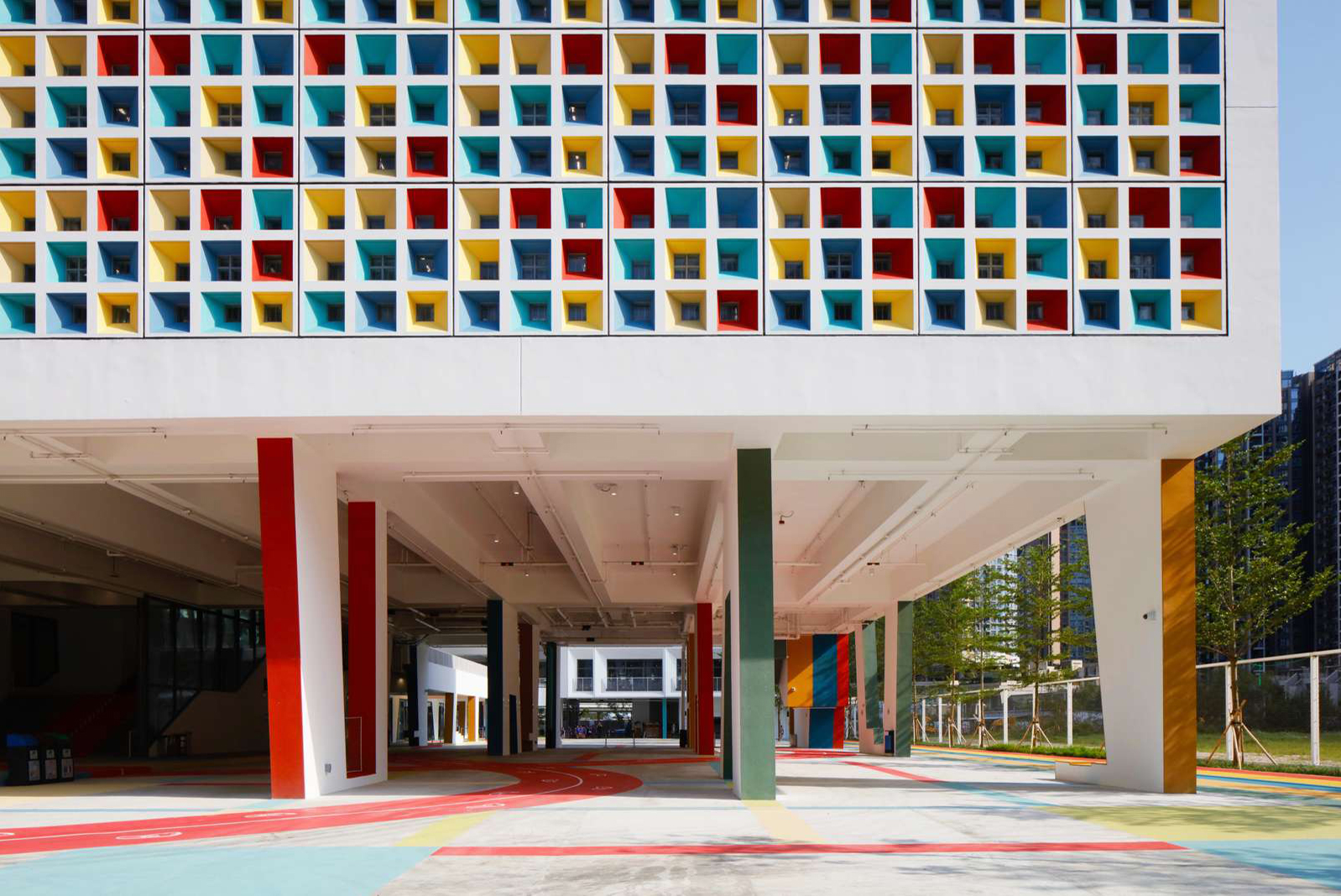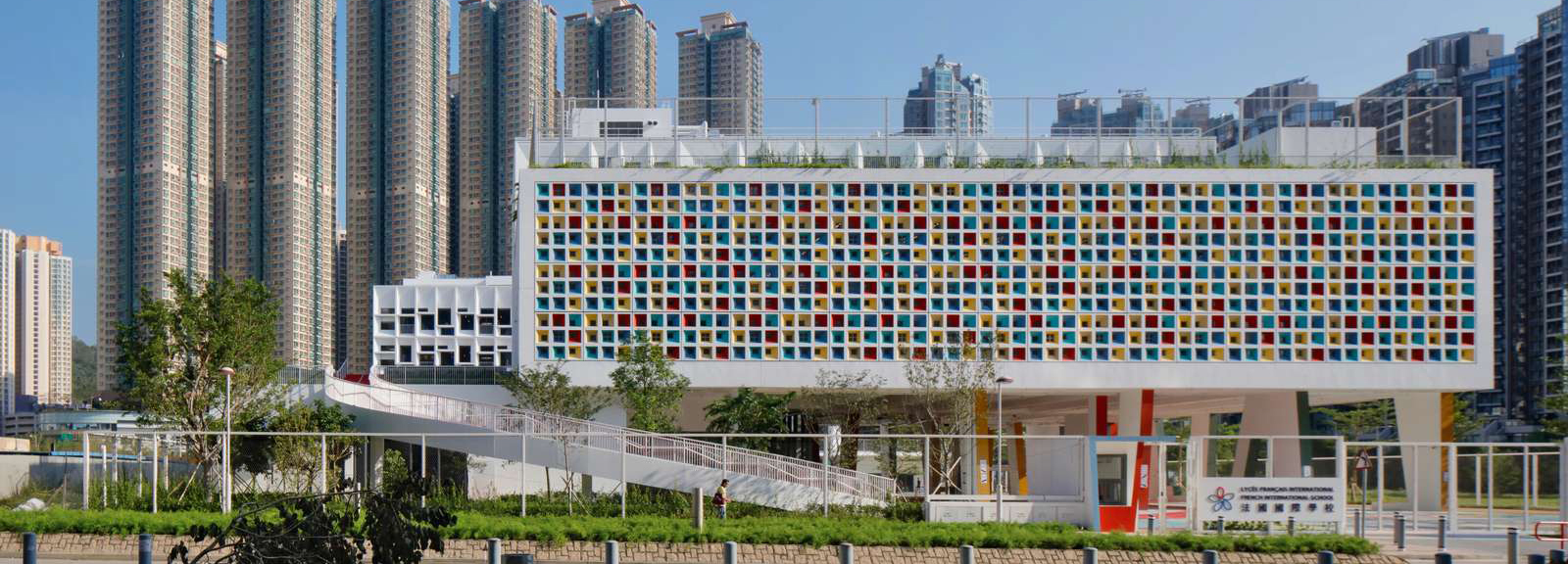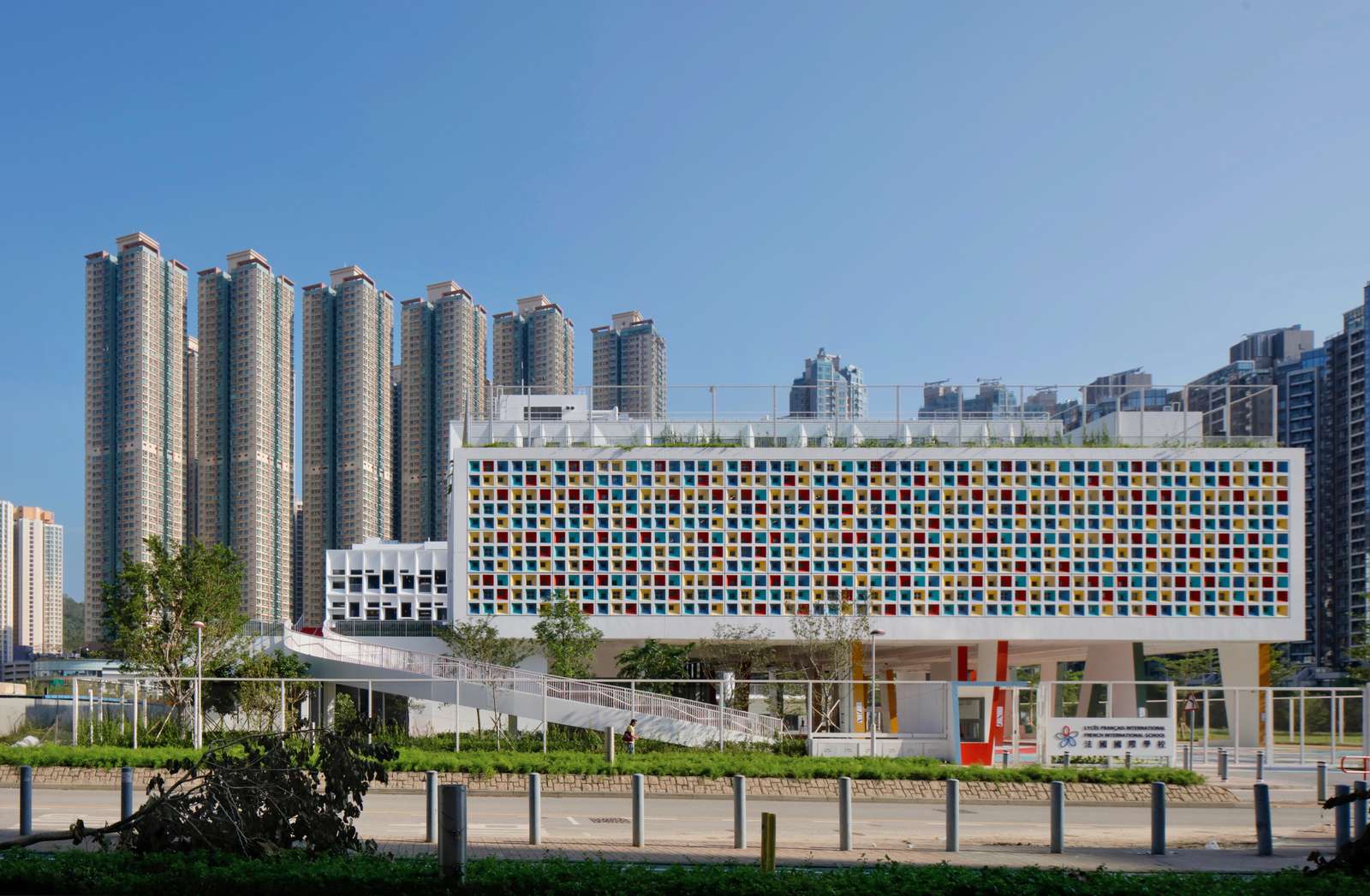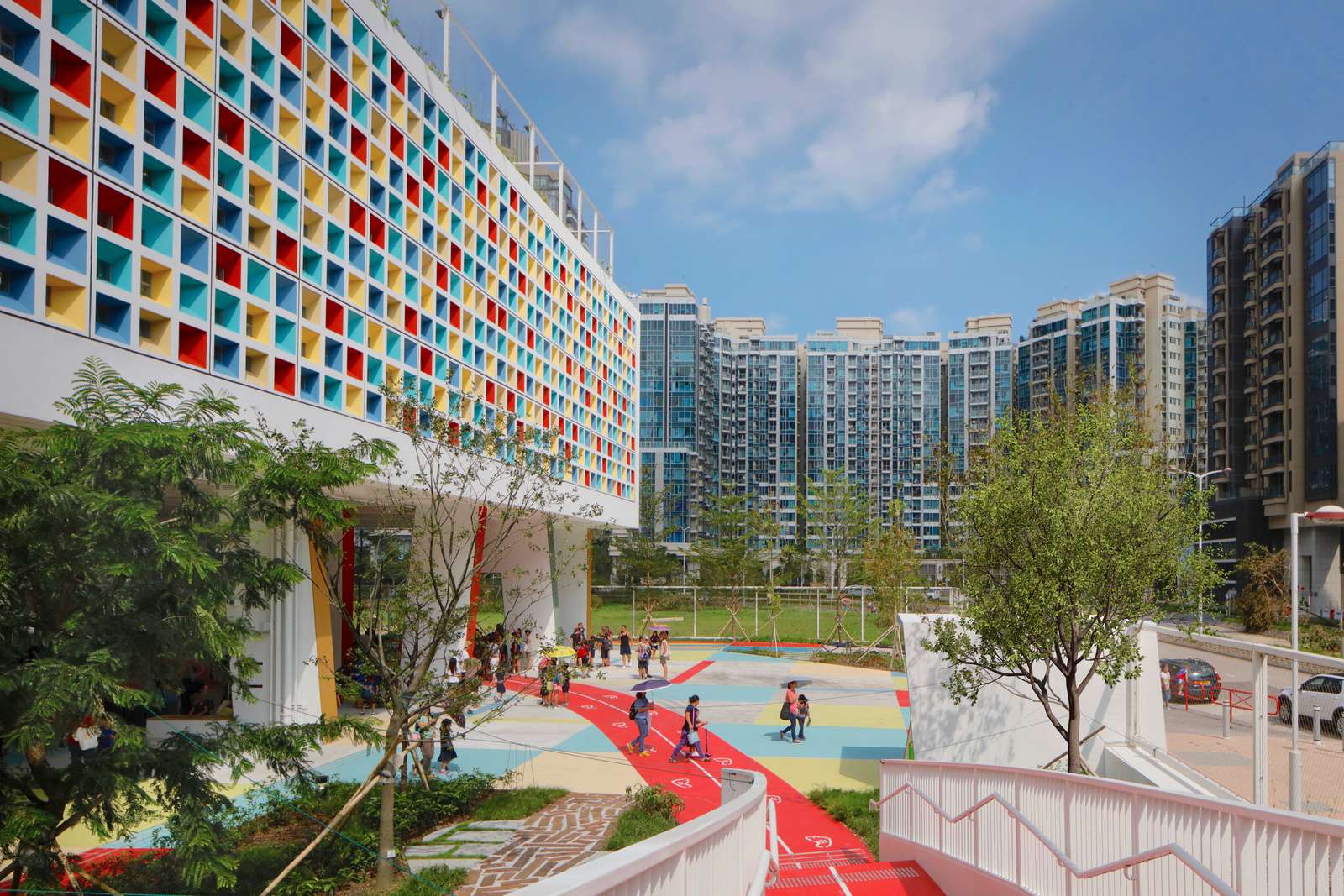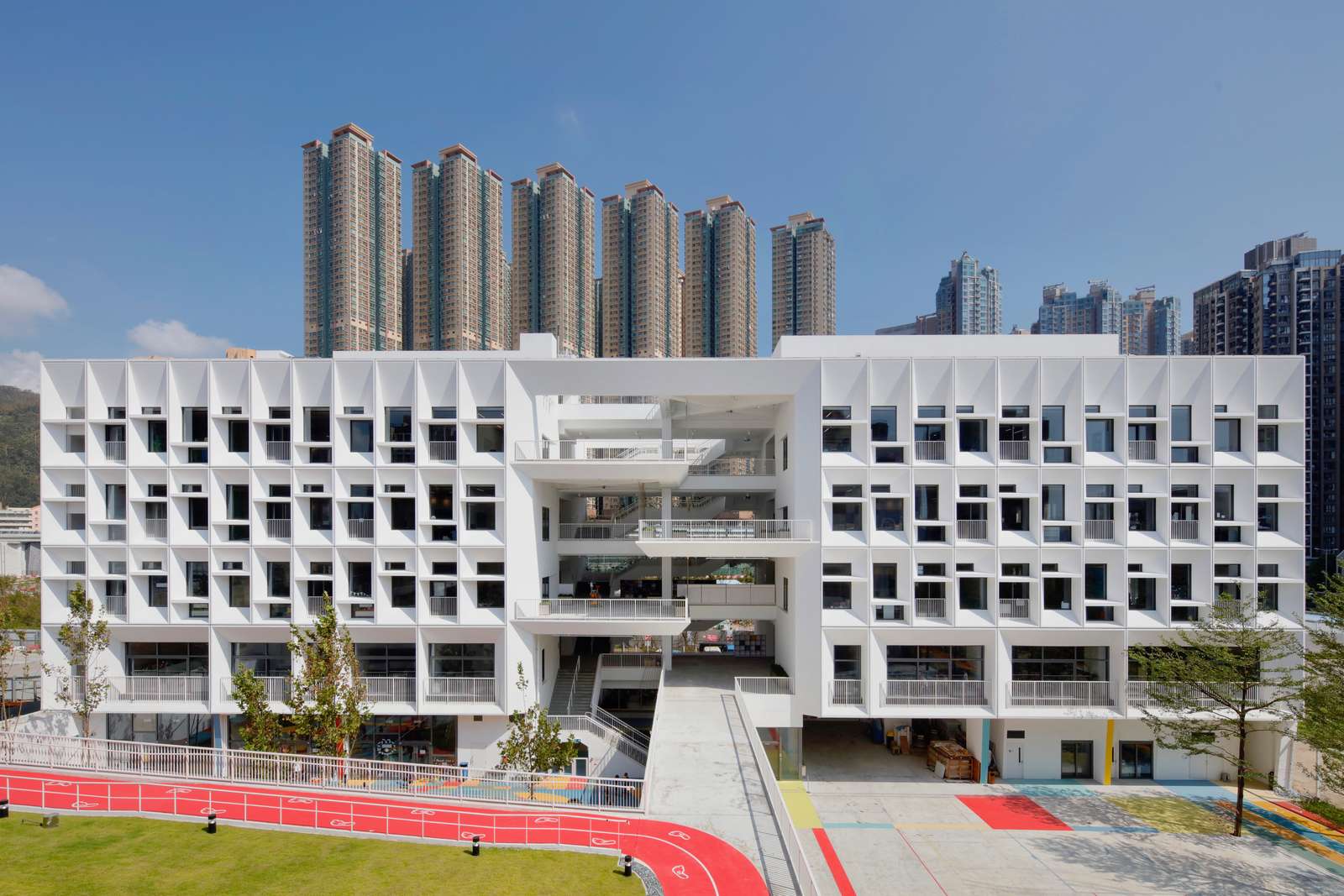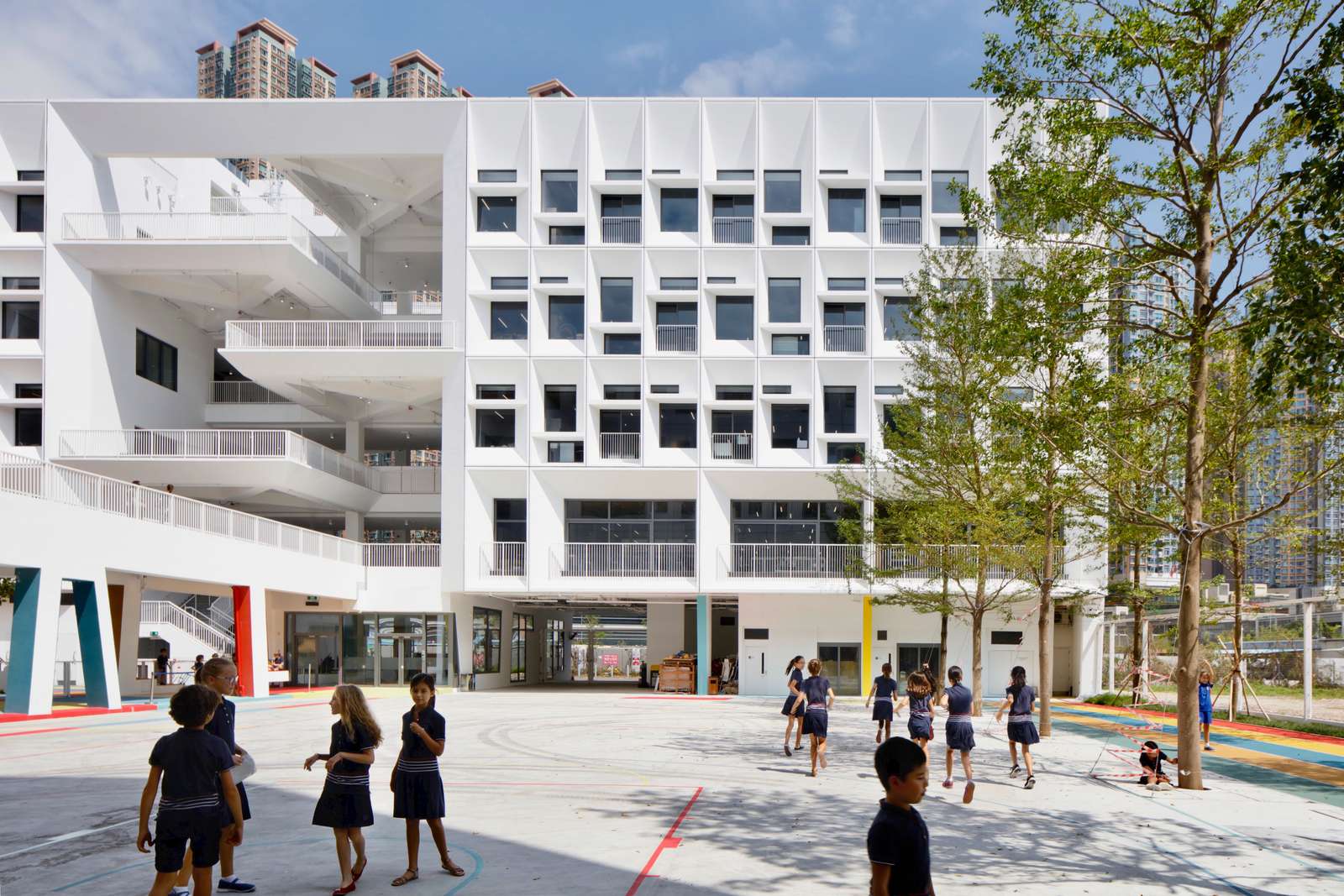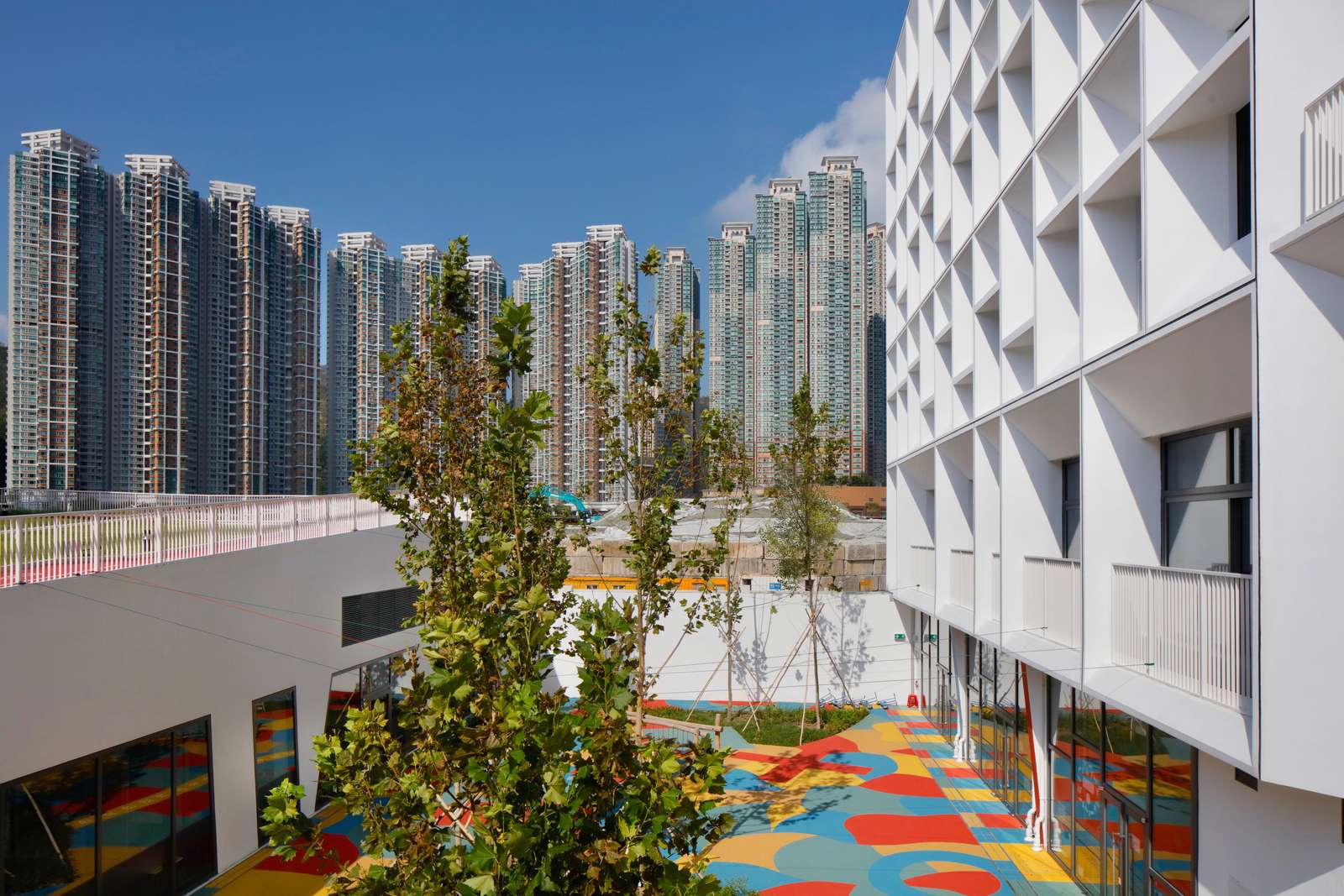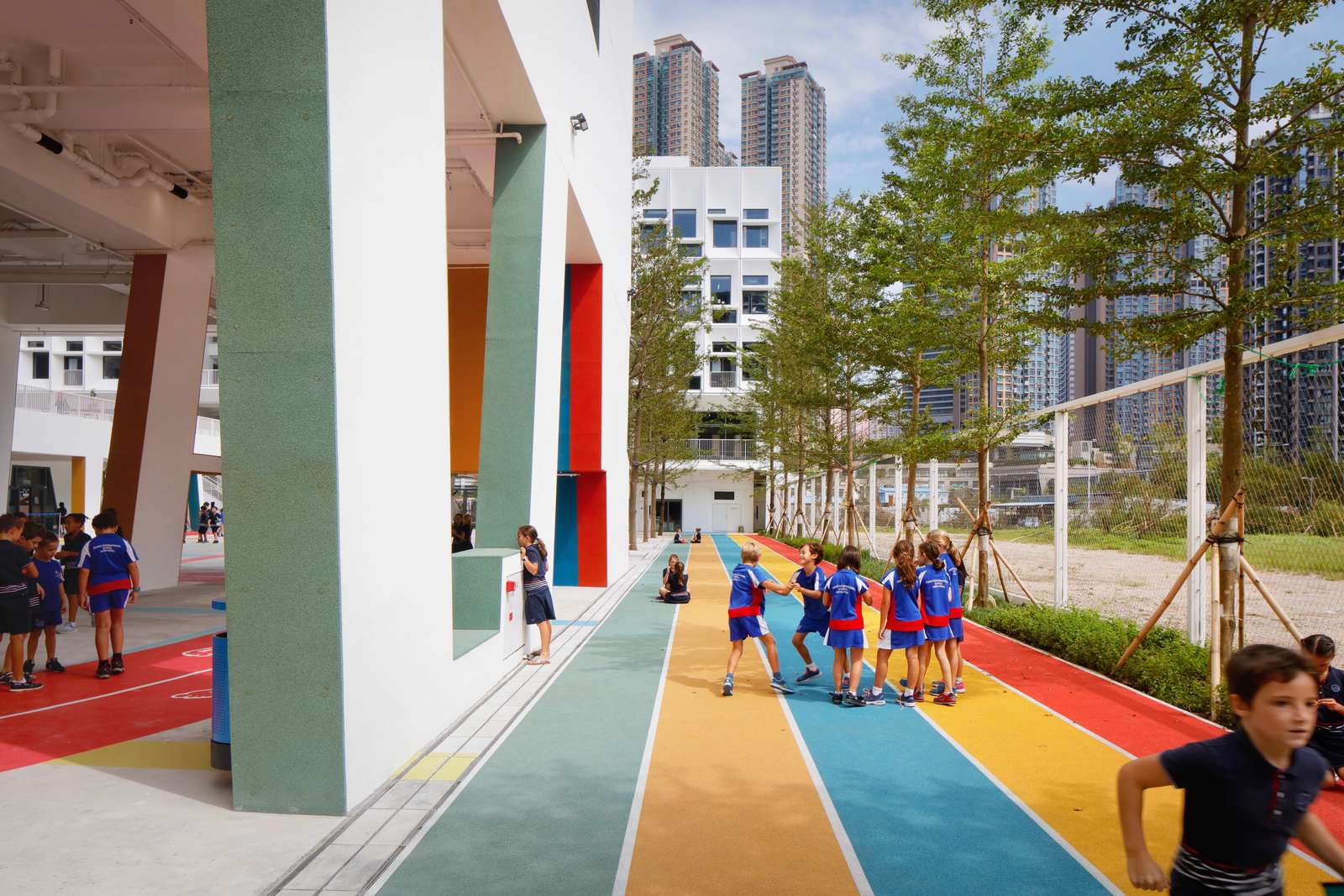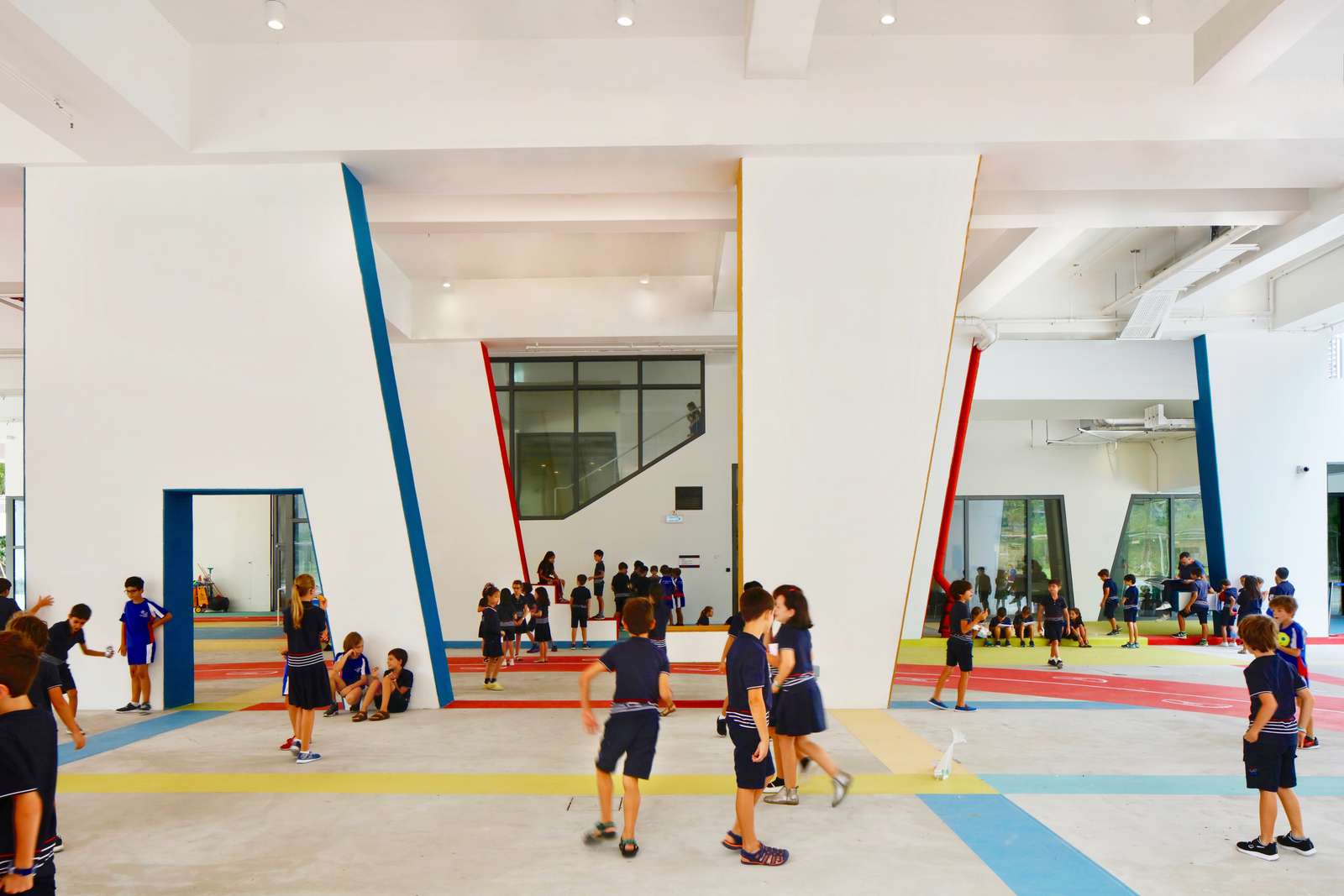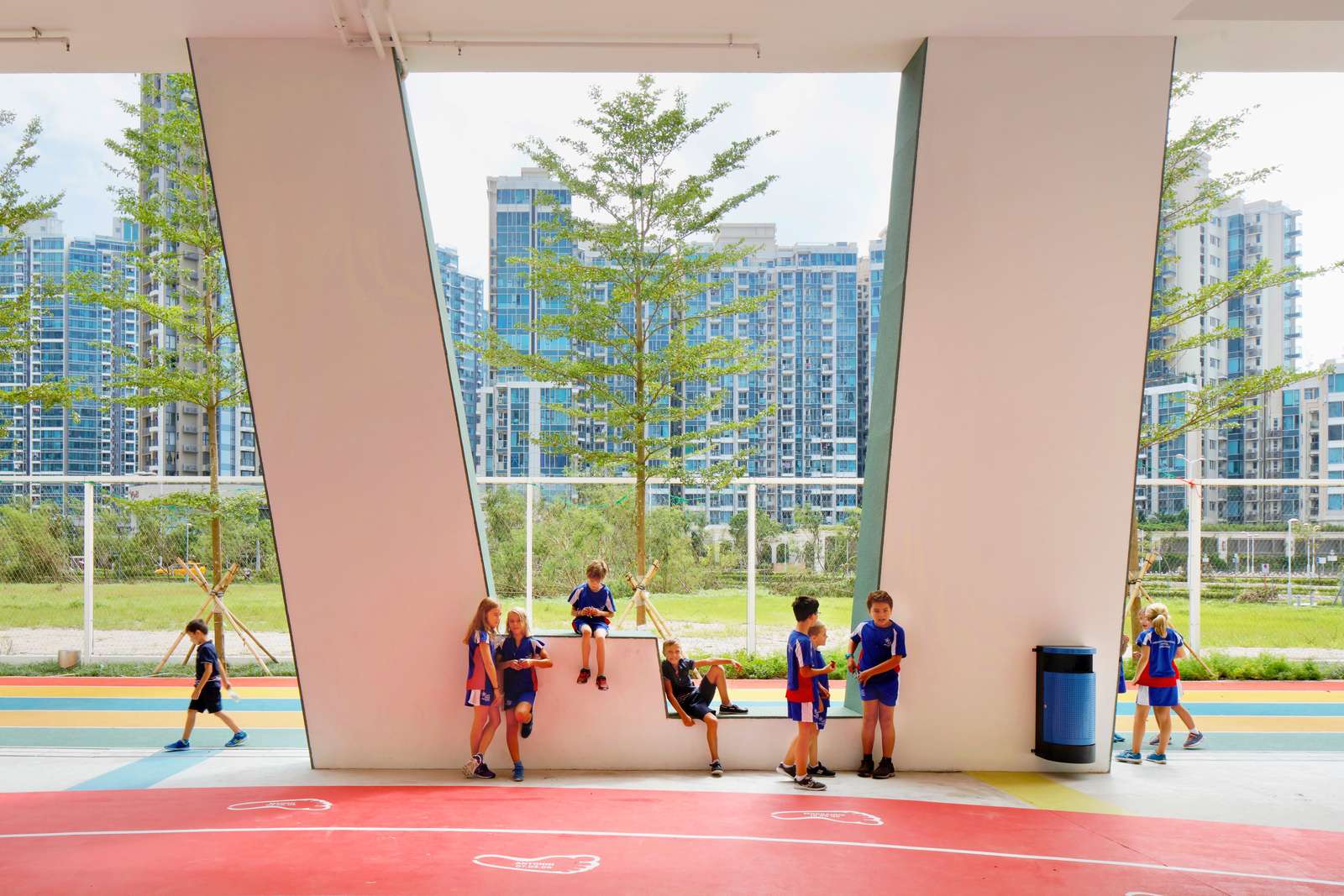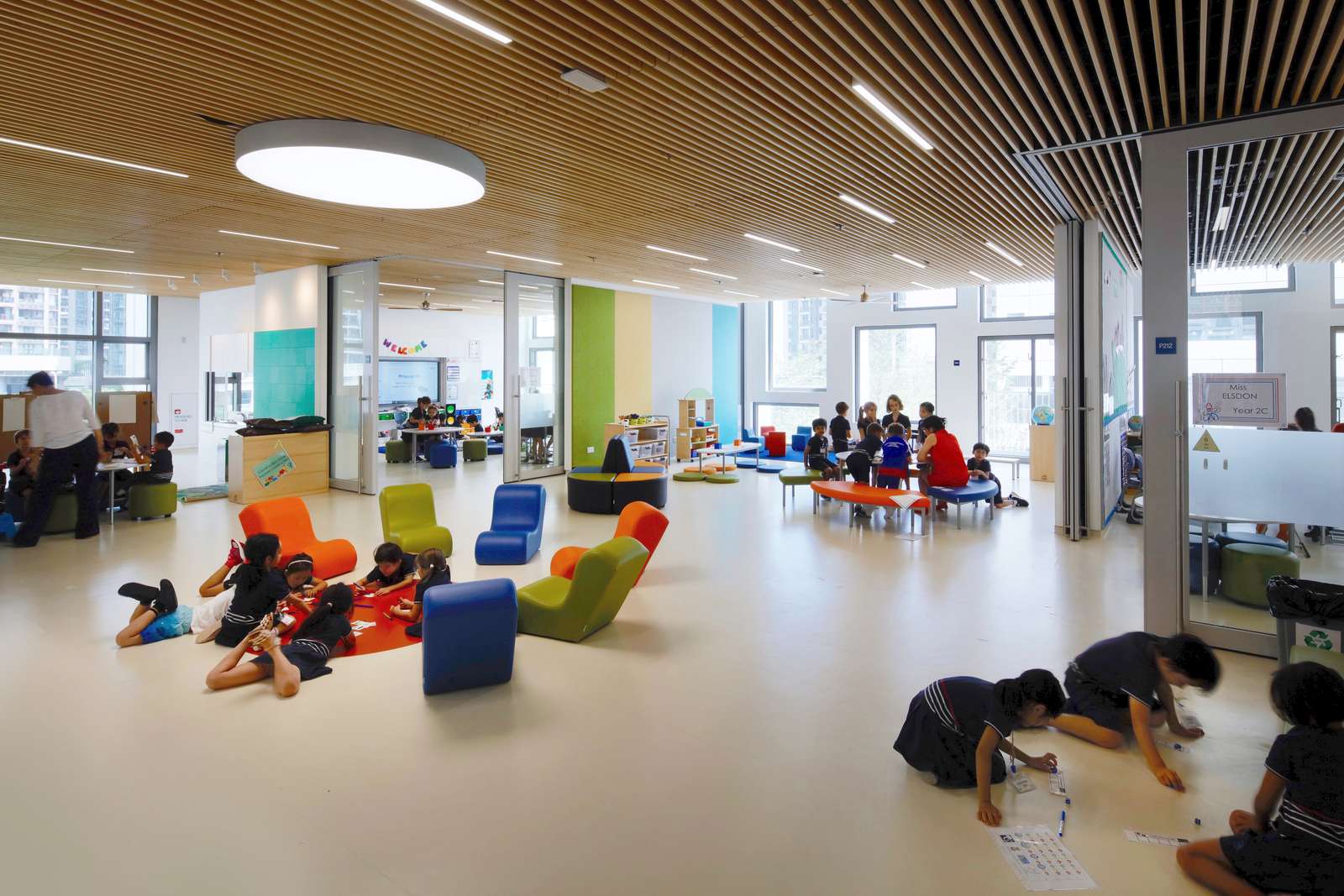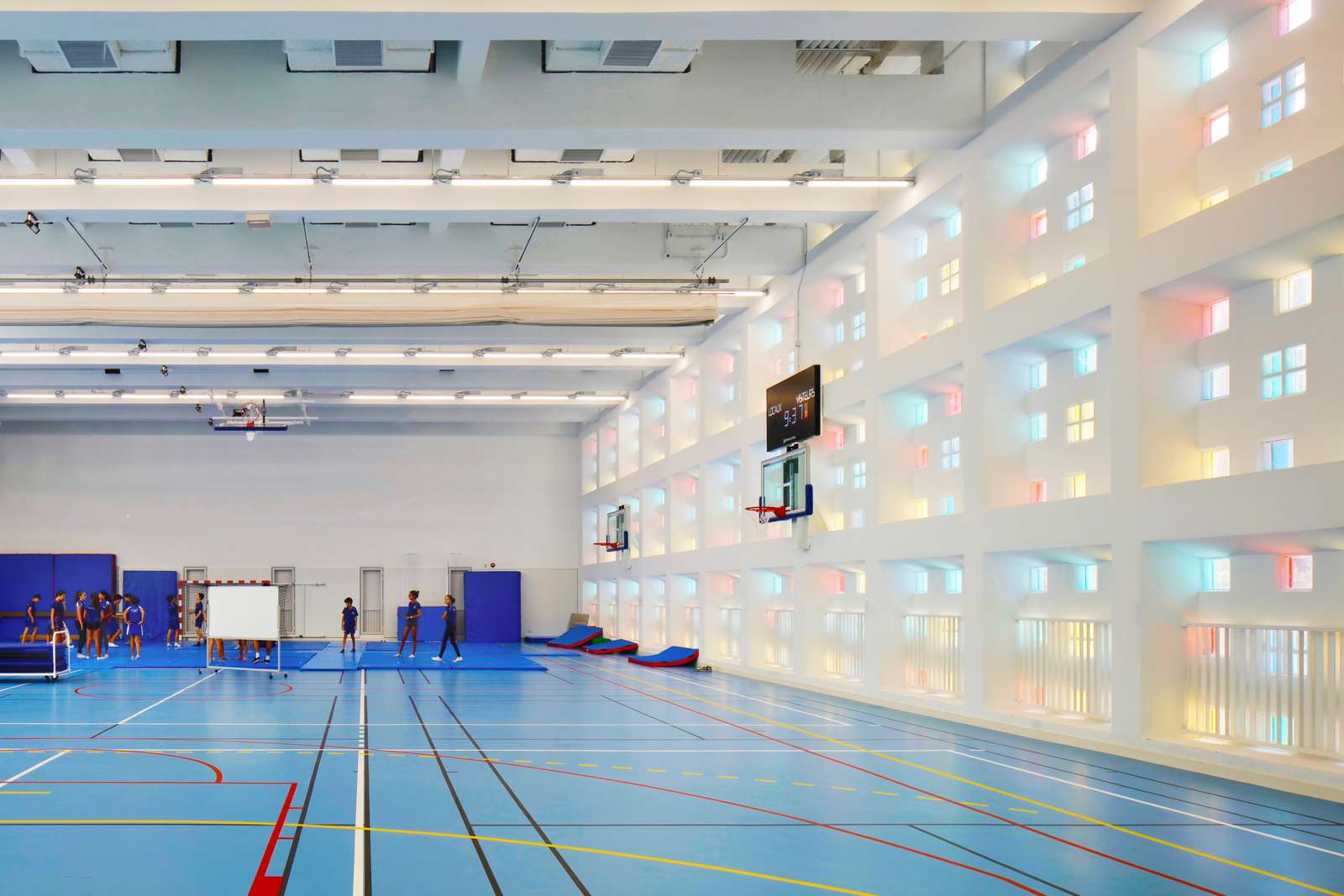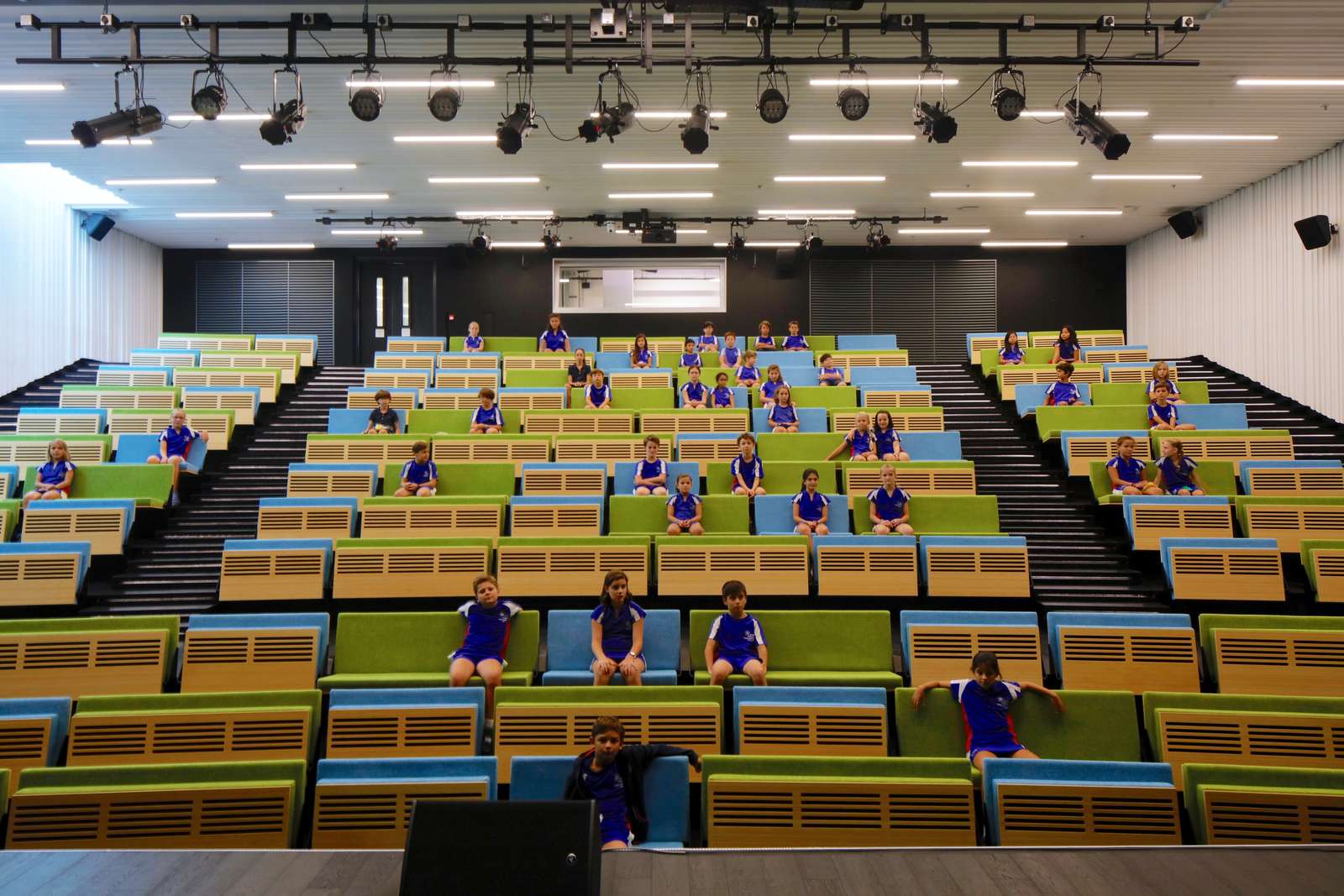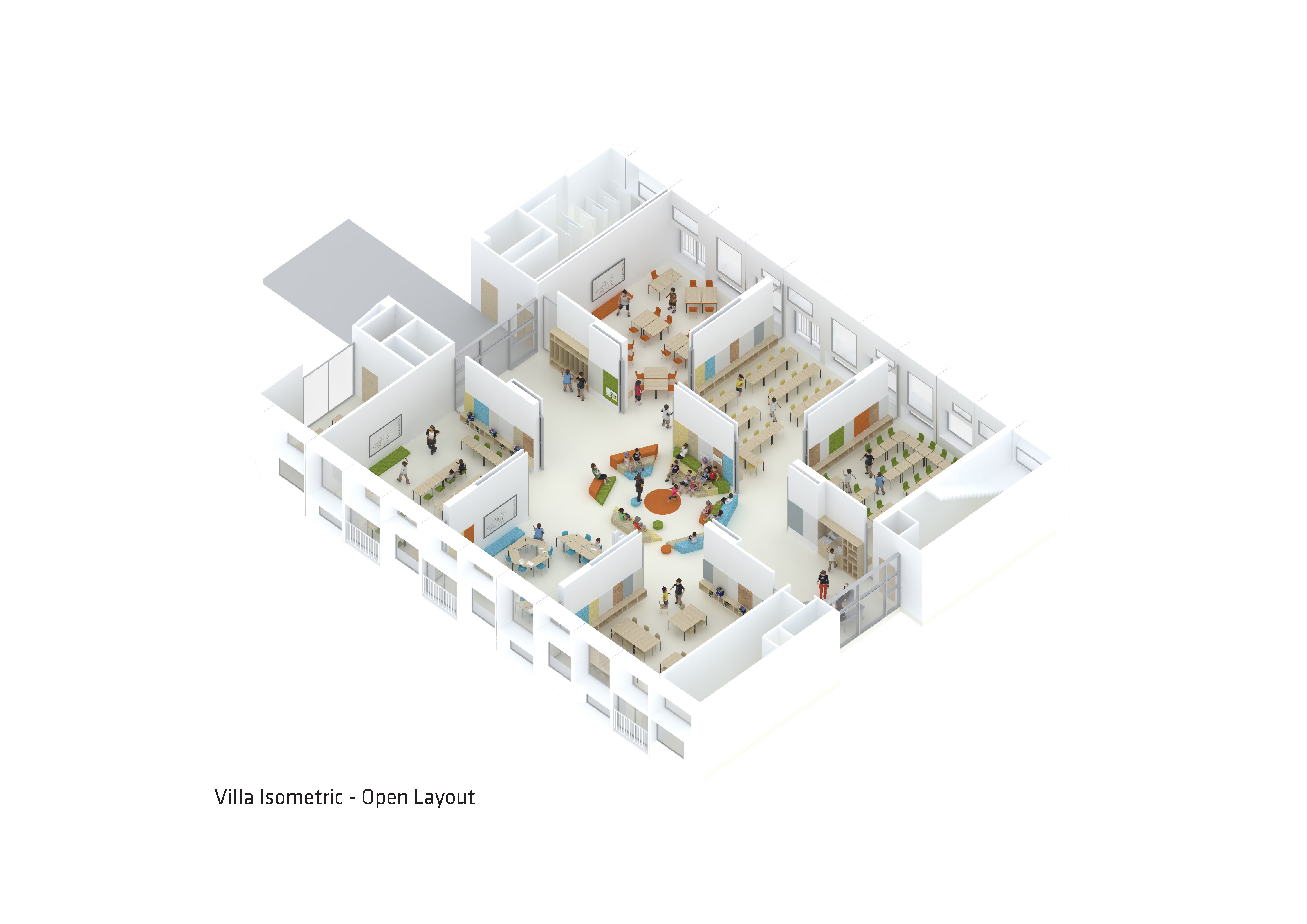Vibrant Oasis: French International School in Hong Kong

Foto: Phillippe Ruault
Henning Larsen Architects have create a small, green island in Hong Kong. The new French International School has space for 1,100 children from primary to secondary age.
The white building recalls the architecture of Le Corbusier. The fact that the structure stands raised on massive supports, as well as its characteristically deep-set windows, present clear references. The sunshades enable generous, even lighting while preventing the building from heating up by minimizing direct sunlight. The vivid colours of the window frames, which consist of 627 ceramic tiles in various shades, also have a strong touch of Le Corbusier.
Traditional classrooms have given way to open floor plans with innovative learning concepts. In the primary school, each class has one large space, known as a “villa”, which can be divided into five smaller units as needed. There is always an “agora” in the middle: a forum for shared play and learning.
Striking a balance between physical exercise and learning is a central point of the school’s concept. Therefore, the school has not only a library and an auditorium, but its own gymnasium and swimming pool as well. The 400-metre outdoor track, called “the loop”, features integrated stairs: the children can jog their way over the entire campus.
Parts of the schoolyard are located beneath the building, so the students can spend their breaks in the shade. The green oasis is even accessible to local residents outside school hours; they can benefit from the island of tranquillity in the urban jungle on weekends and in the evenings. The whole ground floor, which is home to the cafeteria, an exhibition space, the gym and playgrounds, remains open at these times.
The design of the school pays particular attention to sustainability and lower energy consumption. The shape and orientation of the building direct cool air from the sea over the campus. The resulting cross-ventilation reduces the use of air conditioning. Inside, environment-friendly materials have been used, such as natural rubber for the floors and bamboo for the classroom ceilings.

